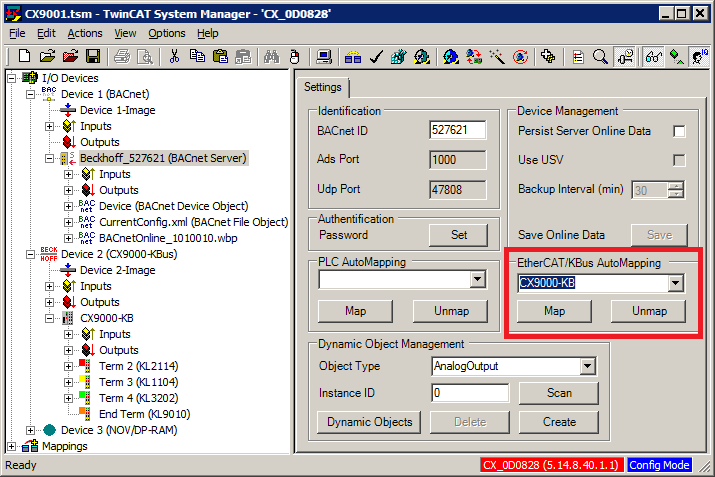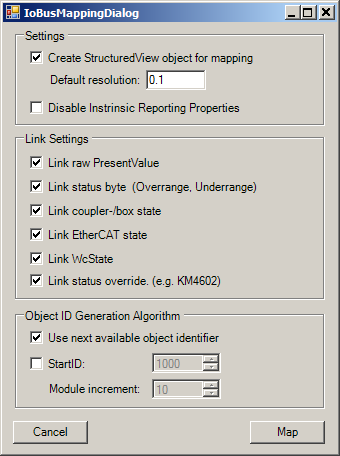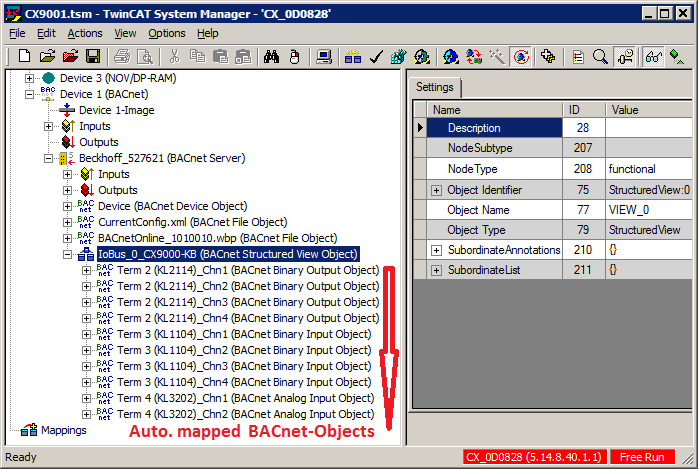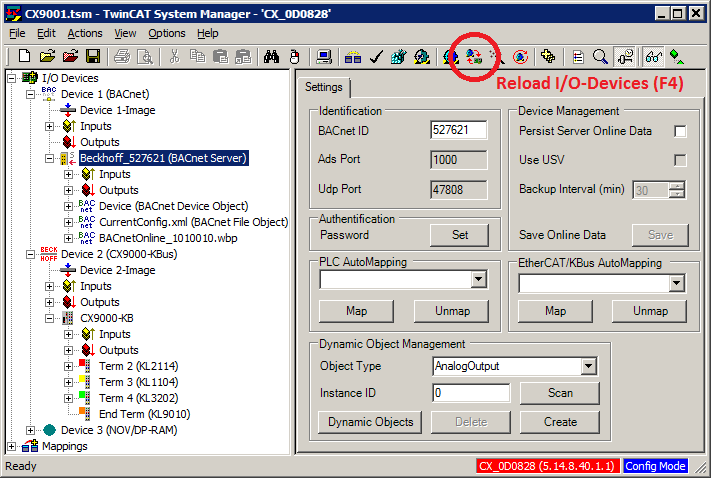Example: I/O automapping
In a BACnet environment data are always represented via objects and their properties. This applies to memory states (variables) as well as hardware inputs and outputs. Essentially it means that all hardware terminals of the I/O system must be mapped via BACnet objects. The automapping option minimizes the complexity of linking between BACnet objects and hardware terminals. The procedure is described below by means of screenshots. Further technical information can be found in section "I/O automapping". An example for manual linking between hardware terminals and BACnet objects can be found in section "Manual hardware linking (terminal), BACnet BinaryInput and PLC runtime".
- Create BACnet adapters and servers (see Example "Create BACnet adapters and servers")
- Create an I/O bus via the Scan function in Config mode or manually (see also section "I/O automapping")
- Activate EtherCAT or K-bus automapping
- a) Select the required bus system via the dropdown box

- b) Press the "Map" button
- The mapping parameters can be set in the Automapping dialog and confirmed with the "Map" button

- A separate dialog indicates the mapping progress

- The BACnet objects representing the the terminals of the I/O bus are located under a Structured View

- The objects are available "Online" once the configuration has been loaded with "Reload I/O Devices" and the Free RUN mode has been activated
